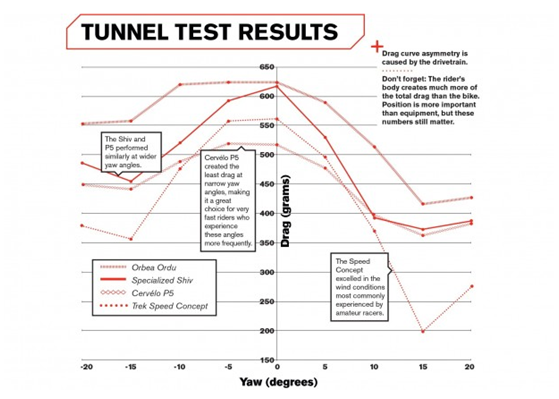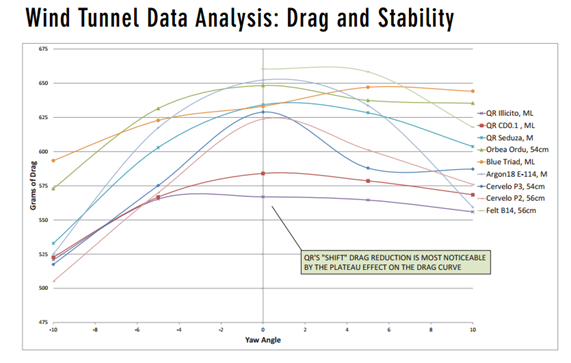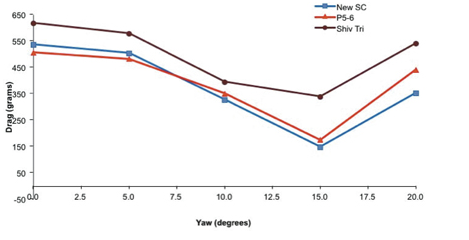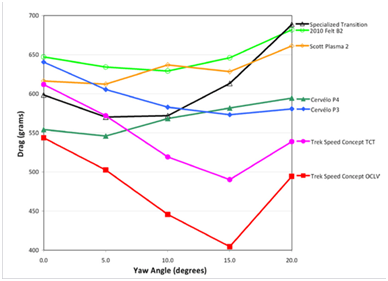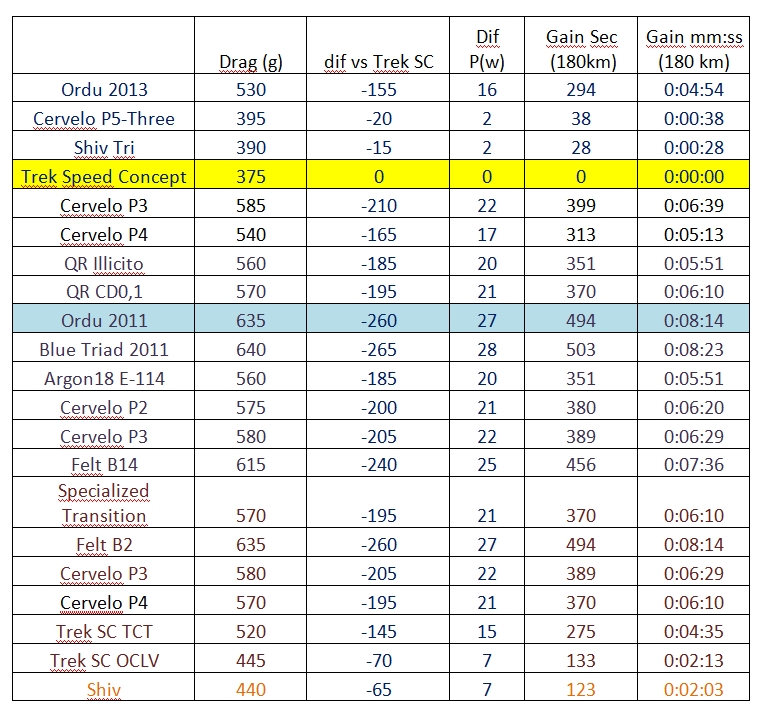Some weeks ago most of us felt at least «surprised» with an interview of three times Kona winner, Craig Alexander.
In this interview, he talked about some facts already known, but what was most shocking for most of us was what he said about the race he won riding an unlabeled Cervelo in 2011 and his 2011 Kona perfomance with Specialized as it was the first time he talked about this, and some data mentioned about this.
More or less, we all knew he was not happy with the material he was receiving from Orbea (his bike sponsor also in 2008 and 2009 when he won in Kona) and as consequence, he broke the sponsorship deal and raced Las Vegas (Ironman 70.3 World Championships) with a Cervelo P4 without any sponsoring contract with the Canadian brand and few weeks laters, he got a deal with Specialized to ride a Shiv in Kona 2011. But what was really shocking for me were the following statements:
- «So aerodynamics is huge, and I know for a fact my average power that year in 2011 was lower — five watts lower — than it had been the year before. So I expended less energy, but I went 13 minutes quicker. That says it. Aerodynamics and drag».
- «So we went on our own. We brought in a bike mechanic, and we brought in a guy who was a Ph.D. in statistical analysis. I took three bikes [the Orbea he was riding and new superbikes from Trek and Cervelo], and the data was night and day. I thought, you know, if it’s one or two minutes, I might cut them some slack. But this guy analyzed the data. He started talking grams of drag and this and that — and I said give me a number. 112 miles, that bike against any of these other ones. He said, conservatively, 10 to 15 minutes for the same energy investment. You will go 10 to 15 minutes quicker on these things — and that was it. I rang the guy back and said I am not riding your bike.»
So, I think it is clear, it is not only my opinion, that he said that the difference between riding a Cervelo P4 or Specialized Shiv or an Orbea Ordu 2010 is about 10-15 minutes based on:
-
Ph.D. in statistical analysis
-
Power data difference between his performances in Kona 2010 & 2011.
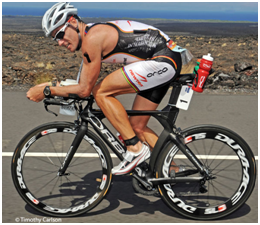 |
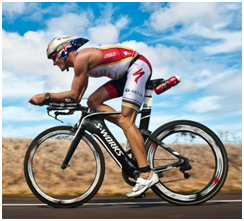 |
I have just tried to put some Physics and numbers on this «shocking» statement.
Let’s start by the Physics. There are plenty of wind tunnel time trial bikes analyses in the internet. I have just collected some of them. The wind tunnel can be different, the test protocol can be not exactly the same… So making direct comparisons is not correct, but I only want to have a first shot of the number that can be necessary to provide a 15 minutes difference in 180 km.
As I have said, mixing data from different tests is a mistake as the differences will be higher than if we perform all the test in the same tunnel with the same protocol in the same day with the same material…., but in this case, the bigger is the difference the better to know if is possible to have 15 minutes difference between a Shiv and a old Ordu.
I have checked the maximum difference measured between the best and the worst bike of each test available. All the data selected are with yaw= 10°, as it is a yaw where all the test have available data and it is a more likely yaw angle in Kona, rather than 15°or 20°, as it is measured and reported in 2013 Trek Speed Concept White paper.
A.1 Triathlon competitor: Four of the worlds fastest triathlon bikes tested
Orbea Ordu 2013 (not Alexander one) vs Shiv vs P5 vs Trek Speed Concept.
Maximum drag difference at Yaw= 10° : 525-375 = 150g
Maximum drag difference at Yaw= 10° : 640-560 = 80g
A3: Trek 2013 Speed Concept Whitepaper
Trek Speed Concept vs P5-Six vs Shiv Tri
Maximum drag difference at Yaw= 10° : 425-375 = 50g
A4 Trek white paper.
Trek SC OCLV vs SCT vs P4 vs P3 vs Plasma2 vs Felt B2 VS Transition
Maximum drag difference at Yaw= 10° : 640-450 = 190g
P4 vs Shiv
Maximum drag difference at Yaw= 10° : 547-440 = 107 g
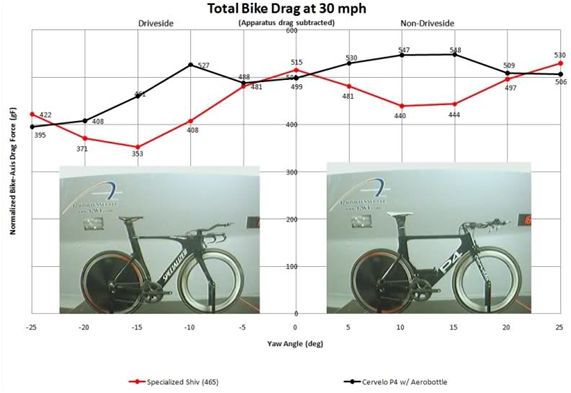
As I said before, mixing data from different test is a mistake, as the differences measured are bigger, as there are different protocols and ways to measure the drag, but in this case, its useful for us. In any case, bikes from same test are in same colour.
So difference between the old Ordu and Shiv could be as maximum of 7m 44s, taken in to account that date proceed from different test, so maybe, this difference probably could be lower.
Approximately, we can consider that 10g of drag are equivalente to 1w less, and this means a difference of 0,1 s/km. So, in order to get 5 sec/km (15 min = 900s / 180 km), drag should be 10* 50 = 500 g. That is, twice any drag measured in these test…
Another interesting example: Specialized performed recently an experiment with ITU World Champ, Javier Gomez Noya, measuring the darg difference with a completely old school equipment versus new Shiv, helmet, etc…
They measured drag in two yaw angles (0º 15º) difference and the result in time and extrapoled to drag in gram as explained above are the following:
|
Yaw |
40 km Gain (sec/ mm:ss) |
180 km Gain (mm:ss) |
Drag |
|
0 |
73 / 1:13 |
5:27 |
167 |
|
15 |
180/3:00 |
13:29 |
413 |
So even in this extreme comparison, a 15 min difference in 180 km is not achieved…
So, maybe the key difference in the Alexanders Kona 2011 performace does not rely completely on the bike… He does not mention that everybody raced faster on 2011, as shown in the next table:
|
2010 |
2011 |
dif |
|
| Alexander |
4:39:35 |
4:24:05 |
0:15:30 |
| Lieto |
4:23:18 |
4:18:32 |
0:04:46 |
| Bockel |
4:35:48 |
4:24:17 |
0:11:31 |
| Jacobs |
4:47:05 |
4:31:01 |
0:16:04 |
| Raelert |
4:32:27 |
4:26:52 |
0:05:35 |
| Al Sultan |
4:32:40 |
4:29:31 |
0:03:09 |
| Bocherer |
4:32:36 |
4:25:46 |
0:06:50 |
So, we could assume the course was, at least, 5 minutes faster due to the wind or other atmospheric conditions. So fast, that Lieto nearly broke the bike split record. Moreover, Alexander does not mention that he ran 2 minutes faster in 2010, probably due to fresher legs, or a less aggressive position in the bike.
|
Alexander |
Best Bike split |
Winner Bike split |
Running split |
|
|
2008 |
4:37:19 |
4:26:15 (Juhanson) |
4:37:19 |
2:45:01 |
|
2009 |
4:37:33 |
4:25:11 (Lieto) |
4:37:33 |
2:48:05 |
|
2010 |
4:39:35 |
4:23:18 (Lieto) |
4:31:51 (Macca) |
2:41:59 |
|
2011 |
4:24:05 |
4:18:32 (Lieto) |
4:24:05 |
2:44:03 |
And finally, he does not mention that he also wore an aero helmet for the first time in Kona, that according to some MIT experiments can provide a 3 minute difference in 180 km as I wrote some months ago…
So, as conclusion, bad commercial behavior from Orbea that didn’t provide a new time trial machine to his best and most famous triathlete, but not all the truth from Crowie, with some statements that can hurt a company and all its employees. Very dissapointing from a man that I considered a gentleman.
